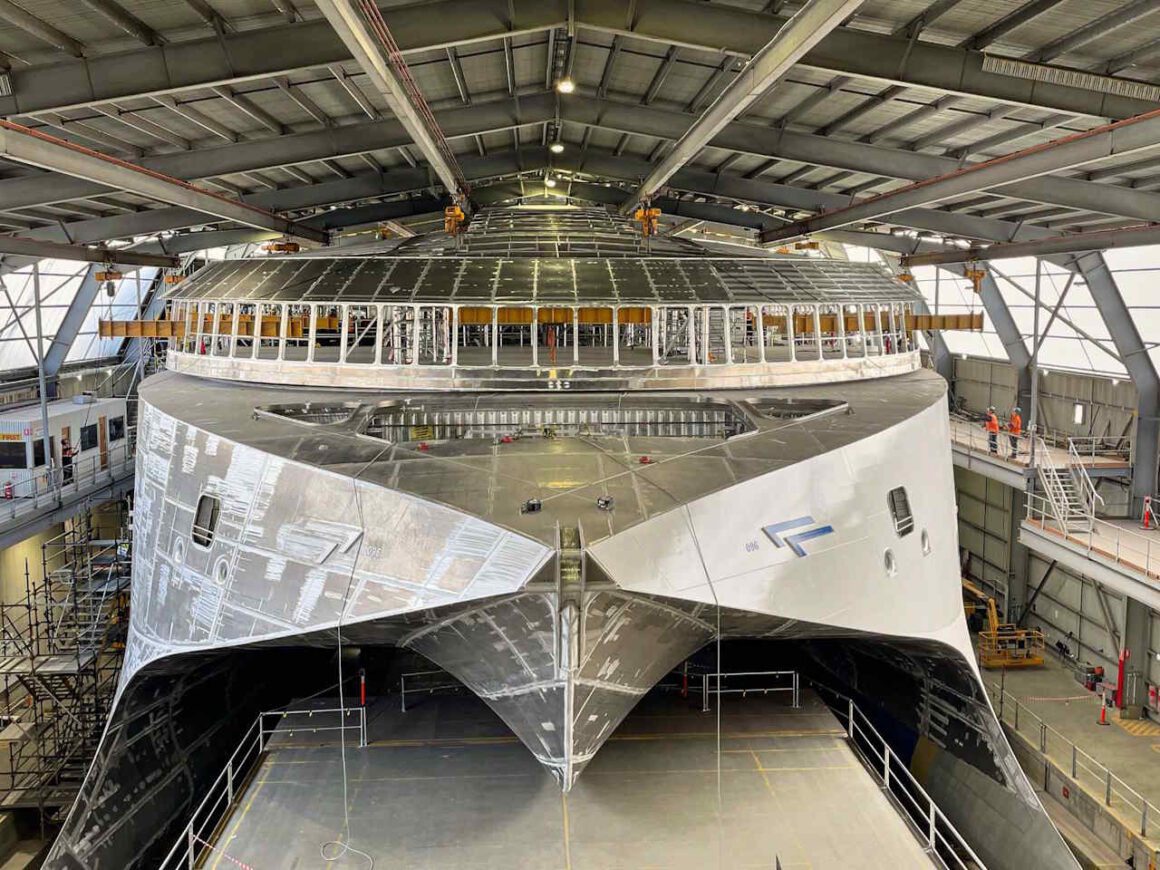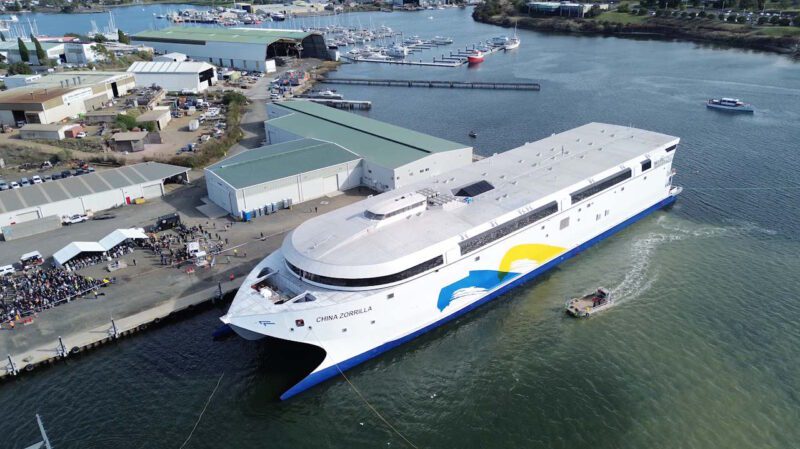Australian shipbuilder Incat Tasmania says it has been selected to design and build two new battery electric ferries for Danish ferry operator Molslinjen in what it says is part of the “world largest electrification project at sea.”
The two new ferries, which will operate on the busy Kattegat route between Jutland and Zealand, will each measure 129 metres in length and be powered by approximately 45,000 kWh battery systems.
“These new vessels for Molslinjen mark a turning point not just for Incat but for the global maritime industry,” said Robert Clifford, chairman of Incat Tasmania.
“They are part of a new class of high-speed, low-emission ships that are redefining what’s possible at sea. We’re honoured to again partner with Molslinjen, and proud to help them deliver real environmental change on one of Europe’s busiest ferry routes.”
Originally co-founded by Clifford in 1972 under the name Sullivans Cove Ferry Company before rebranding to International Catamarans, and then Incat, Incat Tasmania is one of the world’s leading builders of lightweight aluminium passenger and vehicle ferries, with nearly 100 vessels in operation around the globe.
Incat Tasmania operates out of Australia’s largest commercial shipyard, one of the few globally capable of producing large aluminium vessels for the international market, and one which allows the company to rely on 100 per cent renewable energy.
This latest order for two battery electric ferries further cements Incat Tasmania’s position as a world leader in sustainable shipbuilding.
Construction is currently underway on a vessel currently dubbed “Hull 100”, a 78-metre next-generation hybrid ferry, but Incat is also well on its way to completing the world’s largest battery electric ship, which was launched on the River Derwent back in May.

Currently known as “Hull 096”, the battery electric ship was constructedt for South American ferry operator Buquebus and was originally intended to be the LNG-powered China Zorrilla.
The vessel is set to be equipped with more than 40MWh of installed battery capacity and will be capable of carrying up to 2,100 passengers and 225 vehicles across the River Plate, between Buenos Aires and Uruguay.
Construction on Hull 096 is continuing, with work on the interior – including the largest shopping space on any ferry in the world – final fit-out, battery installation, and energy system integration.
Sea trials for Hull 096 are set to take place later this year on the River Derwent.
For more on the story behind Hull 096, The Driven’s Rachel Williamson spoke to Incat Tasmania CEO Stephen Casey earlier this year.
Joshua S. Hill is a Melbourne-based journalist who has been writing about climate change, clean technology, and electric vehicles for over 15 years. He has been reporting on electric vehicles and clean technologies for Renew Economy and The Driven since 2012. His preferred mode of transport is his feet.


